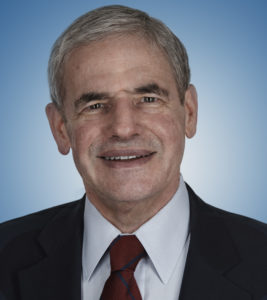Live and let live—LALL–is a recipe for liberty—little or no government—and social tolerance. Can the acronym become a favorite on the Internet and help shape a freer and more tolerant world? Don’t LOL (Laugh Out Loud) at this idea. Let us give it a try.
“LALL” is a good response throughout the world to those who wish to use government coercion or social pressure to impose their beliefs or desires on the rest of us. It encourages people to live their own lives, and respect, rather than interfere with, the lives of others.
Live and Let Live
The American Heritage Dictionary of Idioms defines the phrase as, “Show tolerance for those different from yourself.” It traces the expression to “the first half of [the] 1600s.”
The 1899 Cyclopaedia of Political Science, Political Economy, and of the Political History of the United States, in its piece on “Liberalism” (what we now call classical liberalism or libertarianism), connects the idiom to liberal philosophy:
Liberalism is the consciousness which a free man has of his rights, and of his duties as well; it is respect for and practice of liberty; it is toleration and freedom. ‘Live and let live’ might be taken as its motto …
The maxim is synonymous with “laissez-faire,” a concept with ancient roots in the East and West. It captures the spirit of both the libertarian political philosophy of limited government and the parallel principle of social tolerance. Limited government allows for tolerance, and tolerance encourages limited government.
Reverence and Love
Living and letting live entails positive engagement with other people. Freedom allows this to flourish.
John Chamberlain wrote of the “the live-and-let-live quality” of the “freedom agenda” of Leonard Read, the founder, in 1946, of the Foundation for Economic Education (FEE). In reviewing Read’s 1975 book, Castles In the Air, Chamberlain observed:
[I]t is the freedom to ‘flow and grow’ as human beings that is his primary concern. When people have creative freedom, they do more than eat well. They have a margin to spare for other things. Everyone has a vested interest in the other fellow’s diversity. Reverence for differences leads to reverence for life which is made up of differences.
Living and letting live is the manifestation of love, while seeking control is the use of power. Lawrence W. Reed, now the president of FEE, in “The Love of Power vs. the Power of Love–Today’s Love of Power Has Eroded Our Freedom,” wrote:
When real love is the motivator, people deal with each other peacefully. We use force only in self-defense. We respect each other’s rights and differences. Tolerance and cooperation govern our interactions.
Suppose we want to influence or change the behavior of another adult, or want to give him something we think he should have. … He is free to accept or reject our overtures.
… ‘Live and let live,’ as Americans used to say with more frequency than they do today.
Tolerance and the State
Leland B. Yeager, in addressing the dangers of redistributionism, cautioned:
The spirit of live-and-let-live, so crucial to a free society, is fragile. Any policy that dignifies and reinforces the less lovely traits of human nature, however unintentionally, deserves bad marks on this score.
The growth of government—the rise of the state—threatens tolerance, and feeds on intolerance. As discussed by Wendy McElroy, in “War’s Other Casualty–War Is the Ultimate Act of Statehood,” Randolph Bourne viewed the concepts of society and state as “antagonistic.” Bourne, known for the famous expression, “War is the health of the state,” wrote that society represented “peace, tolerance, of living and letting live.” The state, by contrast, “is essentially a concept of power, of competition; it signifies a group in its aggressive aspects.”
War is a particularly severe threat to the values of society. Ms. McElroy explains Bourne’s observation that, during war, “Instead of its peacetime principle—live and let live—Society adopts the State’s principle of a group acting ‘in its aggressive aspects.’” She notes, “The thrust of Bourne’s essays is how war leads to the moral collapse of society by kicking out the props of peaceful interaction.”
The Founders’ vision of non-interventionism was one of live and let live. The deviation from the principle has led to the creation of an empire and constant engagement in unnecessary wars. Robert Higgs, in “Are Questions of War and Peace Merely One Issue among Many for Libertarians?” warns of governments stealing of liberty through war, and argues that “the issue of war and peace … serve[s] as a litmus test for libertarians.”
Dr. Higgs has also written about how Americans’ intolerance has led to government repression, including the war on drugs. In “Puritanism, Paternalism, and Power,” he observes, “’Live and let live’ would appear to be a simple, sensible guide to social life, but obviously many Americans reject this creed with a vengeance.” Dr. Higgs concludes:
[T]he penchant for acting as self-righteous busybodies has animated the bourgeoisie of this country ever since Pilgrims set foot on Plymouth Rock in 1620. Because this proclivity provides an irresistible opportunity for politicians to promote their own interests at public expense, one must expect that we Americans are doomed to an endless procession of costly, futile, and destructive crusades.
The U.S. and every other country will benefit from greater tolerance and greater freedom. We can take inspiration from the Founders’ vision of limited government and non-interventionism, and from the country’s relative freedom, including its freedom of religion. We can also learn from the country’s departure from its founding principles, and its failure to culturally instill the tolerance needed for a truly free society.
Conclusion
Living and letting live is the decent and moral approach to life. It means engaging our fellow human beings in a peaceful manner. To encourage the idea, and to lead by example, is to encourage freedom and tolerance.
Can an Internet acronym–LALL–help change the world for the better? It is worth trying.




